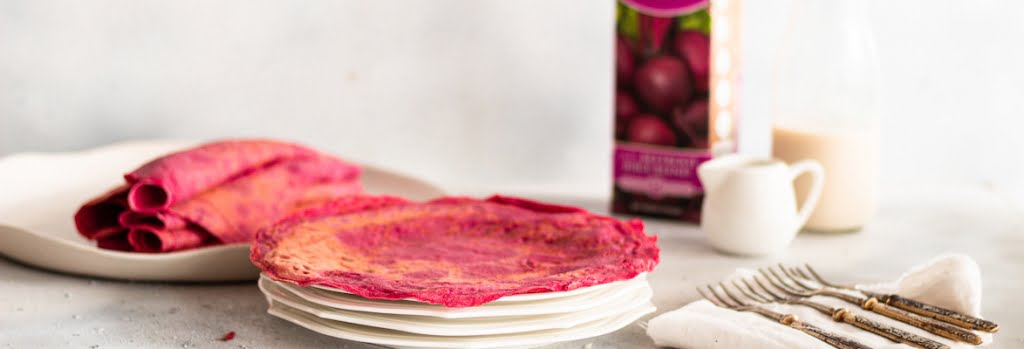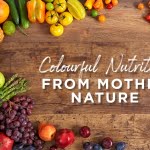Add natural colour & nutrition to your recipes
By Melissa Lainn, an Integrative Nutrition, Health and Wellness Coach
Artificial food colourants are linked to many health issues. Natural is definitely the way to go! Using naturally pigmented vegetables and fruit, can give beautiful natural colour to your food, as well as added nutrients.
Special occasions seem to call for brightly coloured foods. Birthday cakes and colourful candy, holiday cookies and Easter eggs are a favourite in most households.
It’s fun to have a colourful treat occasionally, but you don’t necessarily need artificial food colouring or dyes to do it. Especially since conventional food dyes are petroleum based and linked to side-effects such as hyperactivity in children, increased food sensitivities, and even rashes and eczema. For these simple reasons, it’s so important to learn how to make your own homemade food colouring.
When you use more natural options, you’ll find more benefits than just beautifully coloured food, you can enhance nutrition at the same time.
Many plant-based ingredients, such as vegetables or fruit, already have rich pigments (gifted by Mother Nature) that easily blend right into your favourite recipes.
The four families of plant pigments are:
- chlorophyll (green)
- carotenoids (yellow, red, orange)
- flavonoids: anthocyanins + anthoxanthins (red, blue, purple)
- betalains (red, yellow, purple)
The most popular options to use as natural food colourants are:
- powders made from deep coloured vegetables;
- juice from intensely coloured fruits, vegetables, or herbs;
- concentrated syrups from 100% fruit or vegetable juices.
Start with a small pinch or a few drops of these natural colourants and add more according to your desired shade.
Red:
- Rugani’s 100% Beetroot Juice
- beet powder
- pure pomegranate juice
- red raspberry purée, strained to remove seeds
Pink:
- Rugani’s 100% Zobo infused Beetroot Juice
- pure cranberry juice
- pure raspberry juice
Orange:
- Rugani’s 100% Carrot Juice
- carrot powder
- paprika
Yellow:
- fresh turmeric juice
- ground turmeric
- saffron
Green:
- liquid chlorophyll
- matcha powder
- spirulina powder – use sparingly due to sharp taste
- parsley juice
- wheatgrass juice
- spinach juice
- spinach powder
- parsley powder
- cucumber juice (try the Rugani 100% Green Juice)
Blue:
- red cabbage juice
- stir a bit of baking soda in with red cabbage juice or a purple dye for a brighter blue
Purple:
- pure blueberry juice
- purple grape juice
Brown:
- cocoa powder
- pure espresso
- instant coffee granules
- heavily steeped black tea
- cinnamon
Black:
- activated charcoal powder
Here are a few tips & ideas of how to use natural pigments in your food:
- Vegetable extracts:
Simply mix the vegetable extracts into light-coloured dressings, smoothies, stews, sauces, dips, quinoa or even cake batters and frosting, to add a splash of natural colour to any dish. Veggie juices also pack a nutritional punch. Carrots are high in betacarotene (an antioxidant and precursor of vitamin A) and beetroots are a good source of vitamin C, iron and magnesium.
A great locally grown and produced option is the Rugani Juice range of veggie extracts. Their juices are made from freshly harvested produce and their unique process ensures a very high nutritional yield. The unique process combined with the specially designed packaging, protects the juice from the elements (which can affect nutrient content, shelf life, taste and colour), it is convenient (no mess in the kitchen) and the juices are clean label (no artificial colourants, no preservatives and no added sugar). The Rugani 100% Green Juice, 100% Beetroot Juice and 100% Carrot Juice variants offer strong natural pigments.
- Use water from boiled veggies or fruit:
You can boil green vegetables like peas, or red fruits like cranberries for example, to extract the natural pigments. Then use the pigmented water that’s left behind. It’s another easy, natural way to add colour to food and recipes.
- Natural powdered pigments:
Try Chlorophyll, Spirulina or Matcha tea, which is a finely milled or powder green tea from Japan. They are naturally green or blue pigments that will add not only colour, but a rich flavour to various recipes. They’re also rich in nutrients, antioxidants and fiber.
- Homemade purees:
Make green mac ‘n cheese with greens! Some kids love the idea of green macaroni and cheese, and it’s a sneaky way to include some extra greens in your child’s diet. Make your macaroni and cheese green by taking a spinach puree or even avocado and mixing it with the cheese sauce to get that green colour.
- Dried or fresh spices:
Turmeric or saffron can make foods yellow. As your rice is cooking try adding turmeric for a golden yellow colour. Saffron works too but is a more expensive option.
Paprika can give an orange or deeper orange-red colour. Depending on the peppers used in dried paprika, there will be different colour variations. Heating paprika releases both colour and flavour.
Keep both flavour and colour in mind. Although natural pigments derived from plants tend to be less vivid than artificial colourants and it can be harder to control the colour and consistency – using natural pigments can add extra nutrition and introduce other flavours from the plants they’re derived from.
It’s a good idea to experiment and have a lot of fun, too. You can even have your family take part as a fun activity. Start by making these colourful Pancakes/Crepes and see how many natural colours you can use.

Author Bio:
Melissa Lainn is an Integrative Nutrition Health and Wellness Coach, certified Meditation Practitioner, certified NLP Practitioner and the host of The LifeKraft Podcast. She is passionate about helping people ditch diets, transform their health holistically and find the freedom with food, the energy in their bodies and vitality in their minds that they’ve always wanted.





